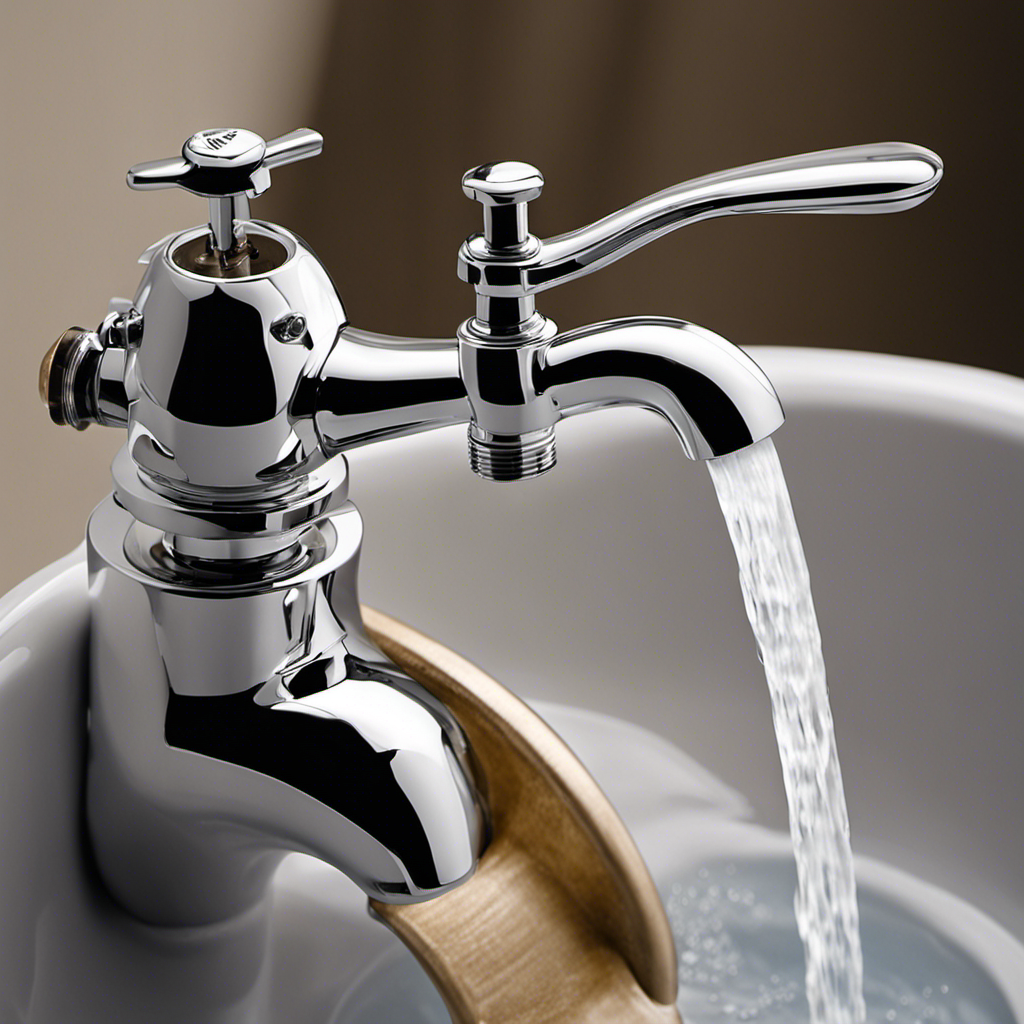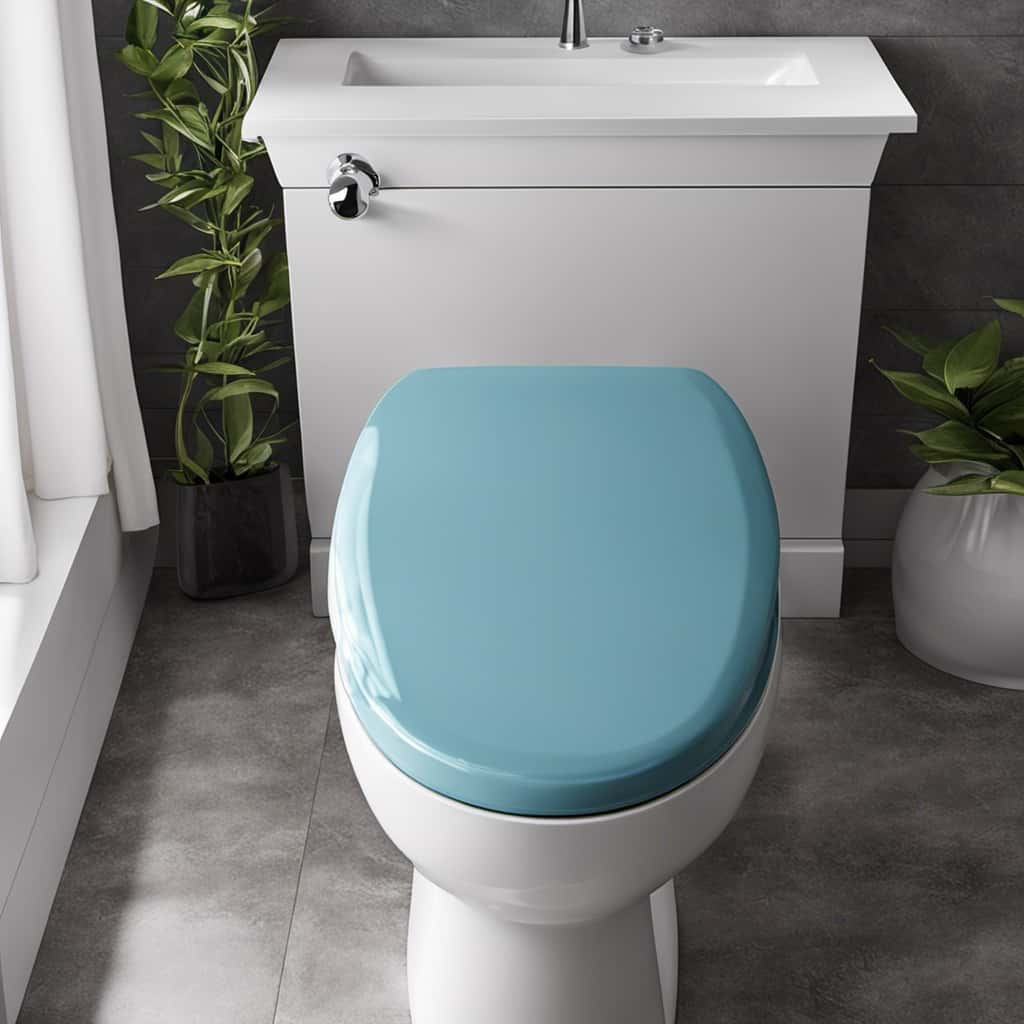Replacing a toilet valve is like solving a puzzle – it requires careful precision and attention to detail. In this step-by-step guide, I will show you how to replace a toilet valve with ease.
With the right tools and materials, you’ll be able to remove the old valve and install a new one in no time. Say goodbye to leaks and hello to a fully functioning toilet.
Let’s get started!
Key Takeaways
- Common problems with toilet valves include leaking flappers, faulty fill valves, and stuck or broken flush valves.
- There are three common types of toilet valves: ballcock valve, diaphragm valve, and float cup valve.
- Tools and materials needed for replacing a toilet valve include an adjustable wrench, screwdriver, pliers, a new toilet valve, and Teflon tape.
- The step-by-step process for replacing a toilet valve includes turning off the water supply, disconnecting the water supply line, removing the old valve, cleaning the area, and installing the new valve according to the manufacturer’s instructions.
Understanding the Toilet Valve
Toilet valves control the flow of water into the toilet bowl. As someone who has repaired many leaks and encountered common toilet valve problems, I have become quite knowledgeable about this subject.
One common issue with toilet valves is a leaking flapper. This can lead to a continuous flow of water into the bowl, wasting both water and money.
Another problem is a faulty fill valve, which can cause the tank to not fill properly or to constantly run.
Additionally, a stuck or broken flush valve can prevent the toilet from flushing properly.
These problems can be fixed by replacing the faulty valve with a new one. Understanding the different types of toilet valves and their functions is essential for successful repairs.
Tools and Materials Needed
First, you’ll need to gather the necessary tools and materials for the task at hand. Here is a list of items you’ll need to replace a toilet valve:
| Tools | Materials |
|---|---|
| Adjustable wrench | New toilet valve |
| Screwdriver | Teflon tape |
| Pliers | Bucket |
Now that you have the required tools and materials, you can proceed with replacing the toilet valve. But before we dive into the step-by-step guide, let’s briefly discuss some common toilet valve problems and the different types of toilet valves.
Common toilet valve problems include leaks, running water, and difficulty in flushing. These issues can often be attributed to a faulty valve, which is responsible for controlling the water flow into the toilet tank. The three most common types of toilet valves are the ballcock valve, the diaphragm valve, and the float cup valve.
With your understanding of the toilet valve types and common problems, let’s move on to the step-by-step guide on how to remove the old valve and install a new one.
Step-by-Step Guide to Removing the Old Valve
Now that you have the required tools and materials, you can start removing the old valve. Removing the old valve can be a challenging task, but with this step by step guide, you’ll be able to replace your toilet valve with ease.
First, turn off the water supply to the toilet by shutting off the valve located near the base. Flush the toilet to drain any remaining water in the tank and bowl.
Next, disconnect the water supply line from the bottom of the tank using an adjustable wrench. Loosen the nuts holding the valve in place and remove the old valve.
To ensure a proper fit for the new valve, clean the area where the old valve was installed. Use a wrench to remove any remaining debris or residue.
Once the area is clean, you can proceed with installing the new valve according to the manufacturer’s instructions. Remember to tighten the nuts securely to prevent any leaks.
Installing the New Toilet Valve
Once you’ve cleaned the area, you can easily install the new valve according to the manufacturer’s instructions. Replacing a faulty valve is a common issue in many households. Here’s a step-by-step guide to help you install the new toilet valve:
- Gather the necessary tools: adjustable wrench, Teflon tape, and a bucket.
- Shut off the water supply to the toilet by turning the valve clockwise.
- Disconnect the water supply line from the old valve using the adjustable wrench.
- Install the new valve by following the manufacturer’s instructions.
By following these steps, you can successfully replace a faulty valve and ensure your toilet functions properly. Once the new valve is installed, it’s time to move on to testing and troubleshooting the replacement.
[Transition Sentence]: Now that the new valve is in place, let’s move on to testing and troubleshooting to ensure everything is working as it should.Testing and Troubleshooting the Replacement
With the new valve installed, it’s important to check for any leaks or malfunctions to ensure the toilet is working properly.
Diagnosing common toilet valve problems is crucial for maintaining the functionality of your toilet. One common issue is a leaky valve, which can cause water wastage and increase your utility bills. To check for leaks, start by turning off the water supply to the toilet and flushing it. If you notice any water seeping out from the valve or the connections, it’s a sign of a leak.
Another problem to watch out for is a faulty valve that doesn’t shut off completely, leading to continuous water flow.
To maintain your toilet valve, make sure to clean it regularly to prevent any buildup or debris that can hinder its performance. Additionally, avoid using harsh chemicals or abrasive cleaners that can damage the valve.
Conclusion
In conclusion, replacing a toilet valve may seem like a daunting task, but with the right tools and a little know-how, it can be done smoothly.
Just like a skilled surgeon delicately handling a scalpel, I carefully removed the old valve, making sure not to damage any surrounding parts.
Then, like an artist creating a masterpiece, I skillfully installed the new valve, ensuring a perfect fit.
Finally, like a detective solving a mystery, I meticulously tested and troubleshooted the replacement, leaving no stone unturned.
With this guide, you’ll be a toilet valve replacement expert in no time!










